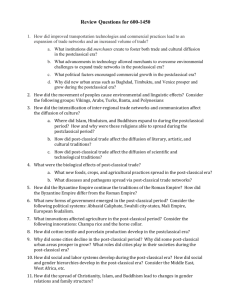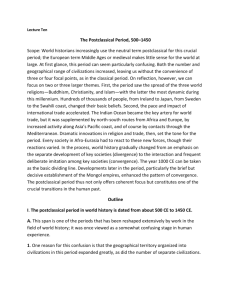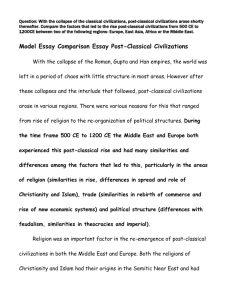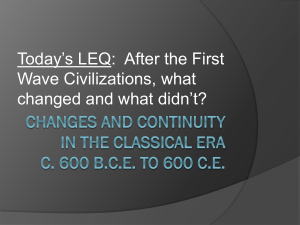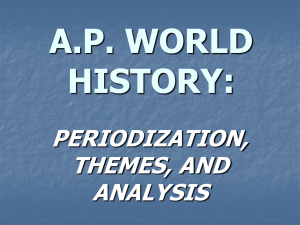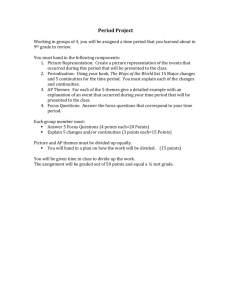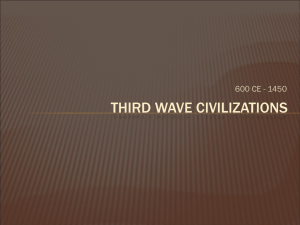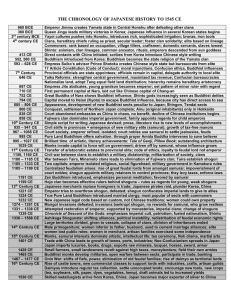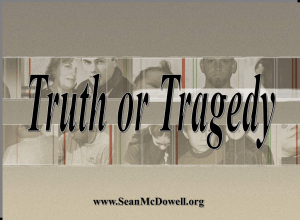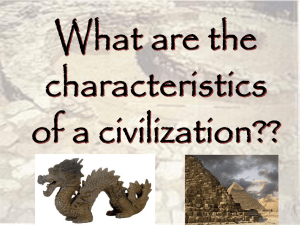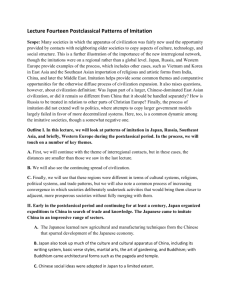The Postclassical Period, 500 – 1450 CE
advertisement
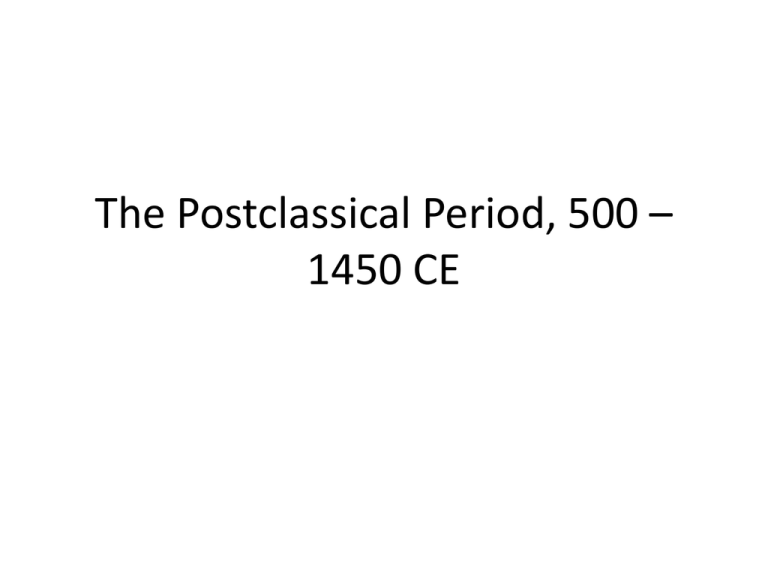
The Postclassical Period, 500 – 1450 CE The post-Classical Period was once viewed as a confusing stage Reasons: • Large geographical area, more civilizations to study • Traditional use of term Middle Ages, implies awkwardness and stagnation • From a world history perspective, postClassical period is dynamic with vigorous societies Periodization: the introduction of a new time period means we need a new framework for analysis Introducing a new time period require three understandings: 1) The themes of the previous period are no longer dominant 2) When the period begins and when the period ends, and the events marking those points 3) What are new themes and issues that most major societies must react to (1) Expansion of great unified empires is a major theme from Classical Era not seen in post-Classical Period • Expansion and integration process in China, India, and Mediterranean is over • China and India are basically established • Mediterranean civilization bursts apart (2) Chronological boundaries of the post-Classical period • Marked by the fall of Han China, Gupta India, and the Roman Empire • The period is marked by the emergence of Arabs and Islam as a new force. • Marked by the fall of the Byzantine Empire • The period ends as Arab political dominance deteriorates and a revitalized Western Europe exerts itself (3) Themes of the post-Classical Period 1. Emergence of a larger number of civilizational centers, and a larger geographical range for civilizations 2. The spread of major world religions: Christianity, Buddhism, and Islam 3. Emergence of a sophisticated “world network” of trade and commerce Post-Classical Theme #1: More civilizations emerge, civilizations spread over larger geographic area Post-Classical Theme #2: The spread of major world religions • Christianity, Buddhism, and Islam will touch every major Afro-Eurasian society • Originating in the Middle East and India these religions spread through intense missionary zeal • Postclassical era not defined by overarching political developments (i.e. massive empires). Churches, Islamic “universities”, and Buddhist temples become the focus of activity, making the role of formal states less important Post-classical theme #3: Emergence of a “world network” of trade • A major artery from Mid East across Indian Ocean to Pacific Coast of China • North-south feeder routes (most not depicted in map to the left link China, Africa and northern Europe to the Arab world Categorization of new and old civilization centers into two economic and contact zones • The first zone consists of the major civilization centers from the Classical period: the Arab world, Byzantine Empire, India, and China • Zone One centers were more developed and sophisticated • Around Zone One emerged new civilizations (ex. Japan). Imitation of cultural and economic apparatuses allowed them to develop more quickly Theme #2 and #3 raise some final points to consider • The spread of world religions created new rivalries, suspicions, and contacts (i.e. war) that endure up to today • Some historians believe the new trade connections, contacts, and imitations are more important • Dilemma: the religions established new cultural boundaries that could modify or challenge the commercial connections Questions to Consider 1) What are the main differences between the world around 1200 CE and the world around 100 CE? What are the main differences, in other words, between postclassical and classical worlds at their respective high points? Are there also some important continuities between these two eras? 2) What are the signs of growing convergence among major societies during the postclassical period? What were the main reasons that this convergence occurred?
